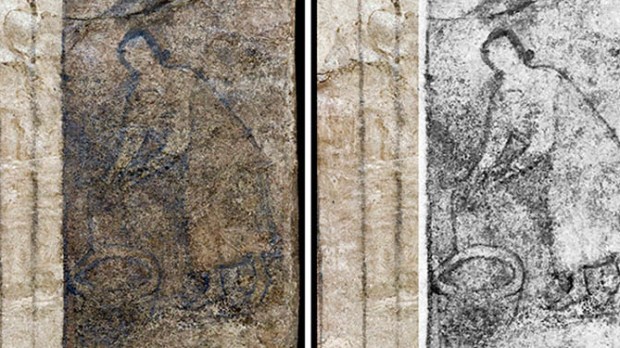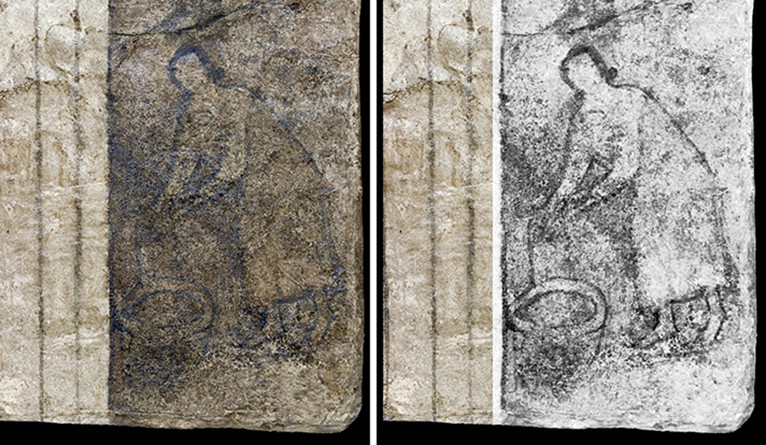As summarized in a recent article, the Old and New Testament provide many descriptions of the words and actions of Jesus but none about his looks. That’s why painters and icon-makers relied mostly on artistic canon, rather than realism, when they had to portray the Messiah in icons or frescoes. The same principle goes for Mary, as the scriptures do not provide many details about her appearance either.
But by looking at the earliest depictions of the Blessed Mother, we can infer a lot about the main character traits that artists wanted to stress —from nurturing and motherly love to obedience to God—and about the different artistic styles developed by Christian communities during the first nine centuries of Christianity.
Take a look at these nine early images of Our Lady:
1. Dura-Europos Church, Syria, 2nd century
Discovered in the 1920s by a team of archaeologists from Yale, the Dura-Europos Church in modern day-Syria is considered to be the earliest Christian church we currently know of. The team was able to recover its ancient artworks, dating back to the 2nd and 3rd centuries, including the depiction of a woman leaning over a well, which for a long time was considered to be a representation of the Samaritan woman who speaks with Jesus beside Jacob’s well as recounted by John (4:1-42). But a recent theory proposed by Michael Peppard, an Associate Professor of Theology at Fordham University, has rejected this interpretation, arguing that the painting is actually a depiction of the Annunciation, when angel Gabriel announced to Mary that she would conceive and give birth to Jesus. Peppard points out that in written descriptions of the Annunciation found in 2nd-century biographies of Mary, Gabriel reaches her as she is drawing water with a pitcher, much as the Dura-Europos image shows and in line with Byzantine-era images of the scene. Further study of the image also revealed details that are invisible to the naked eye, such as two lines reaching the woman’s torso, that suggest the depiction of an incarnation. Based on such evidence, the Dura-Europos painting can be considered the first ever portrait of the Holy Mother.
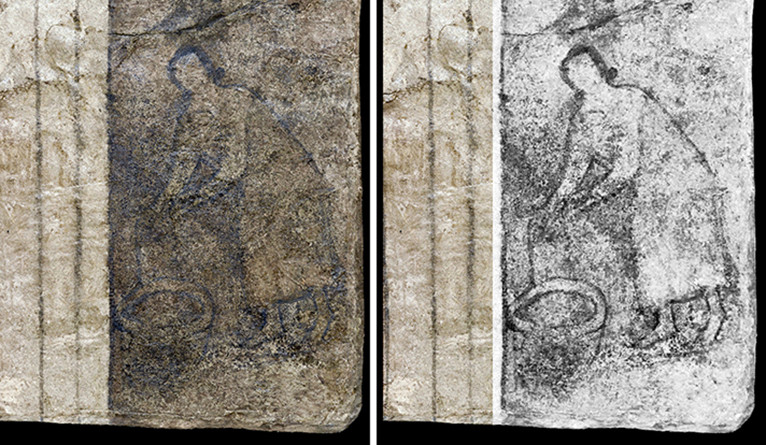
2. Madonna of the Catacombs, Rome, 3rd century
This image painted on the walls of the Catacombs of Priscilla, located underneath Rome’s Via Salaria in what used to be a quarry, show Mary as she is nursing a baby Jesus sitting on her lap and looking at the viewer. The artwork dates to the 3rd century, back when Christianity was still an illegal practice in Imperial Rome. Early Christians would meet in the catacombs to bury their dead and pray at the tombs of the martyrs, which is why artwork from this age can tell us a lot about the ideals and values of the very first Christian communities. In this fresco, Mary is depicted as she attends to the Christ Child, a symbol of her nurturing nature.
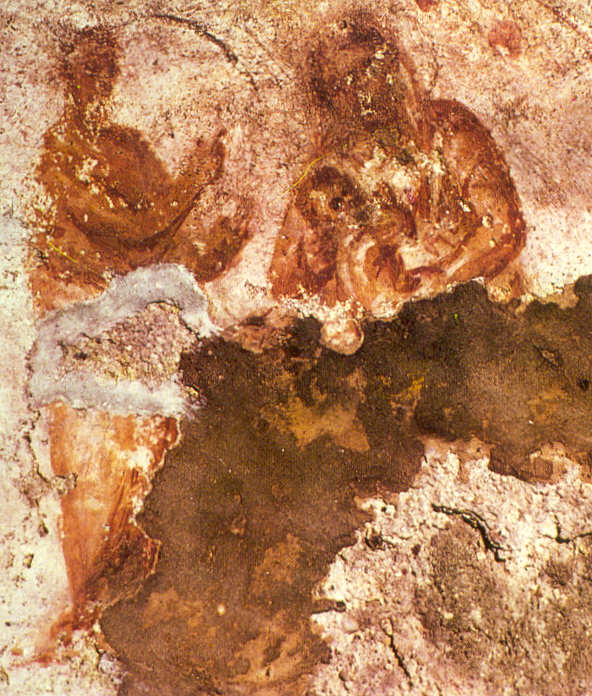
- Madonna with the Magi, Rome, 3rd century
The Gospels lack descriptions of the appearance of Jesus and Mary but abound in descriptions of the actions of the mother-and-son duo. One of the most popular actions to be depicted during the early days of Christianity was the arrival of the Magi after Jesus’ birth. This image, dating to the 3rd century, depicts the Magi adoring the Christ Child, who is held by his mother Mary. It was used to decorate a sarcophagus now held at the Vatican Museums in Rome.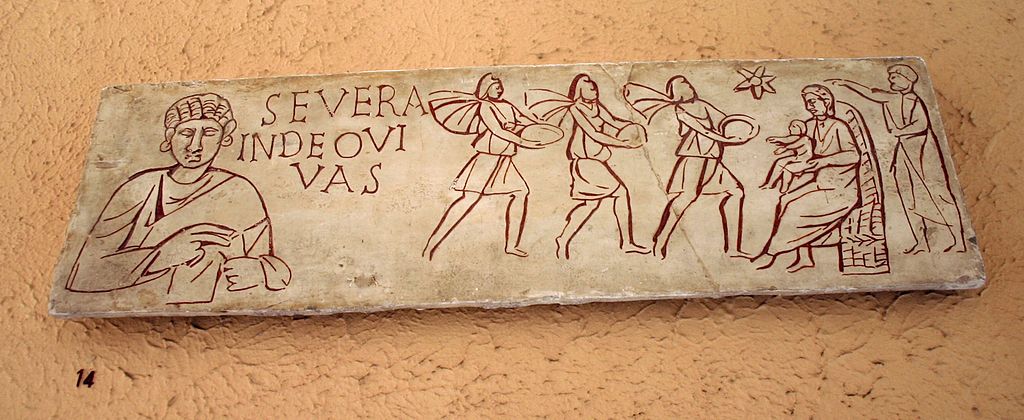
- Protectress of the Roman People, Rome, 5th century
One of the traditional Byzantine icons to emerge during the 5th century, when Christianity had become the official religion of the Roman Empire, depicts the Blessed Mother as Salus Populi Romani, Latin for “health of the Roman People.” This icon, painted on a cedar panel, depicts Mary with a dark blue mantle trimmed with gold over a purple tunic, the typical dress of figures of power in 5th-century Rome. She is holding the Christ Child, who is shown with a book in his left hand, presumably the Gospel. Unlike the 3rd-century representations of similar scenes, we see Mary, rather than Jesus, looking directly at the viewer. Art historians have long argued about a precise dating of this icon, and the consensus has it as a Late Antique icon created in the 5th century that was over-painted during the 13th century. It is currently kept in the Pauline Chapel of the Basilica of Saint Mary Major in Rome.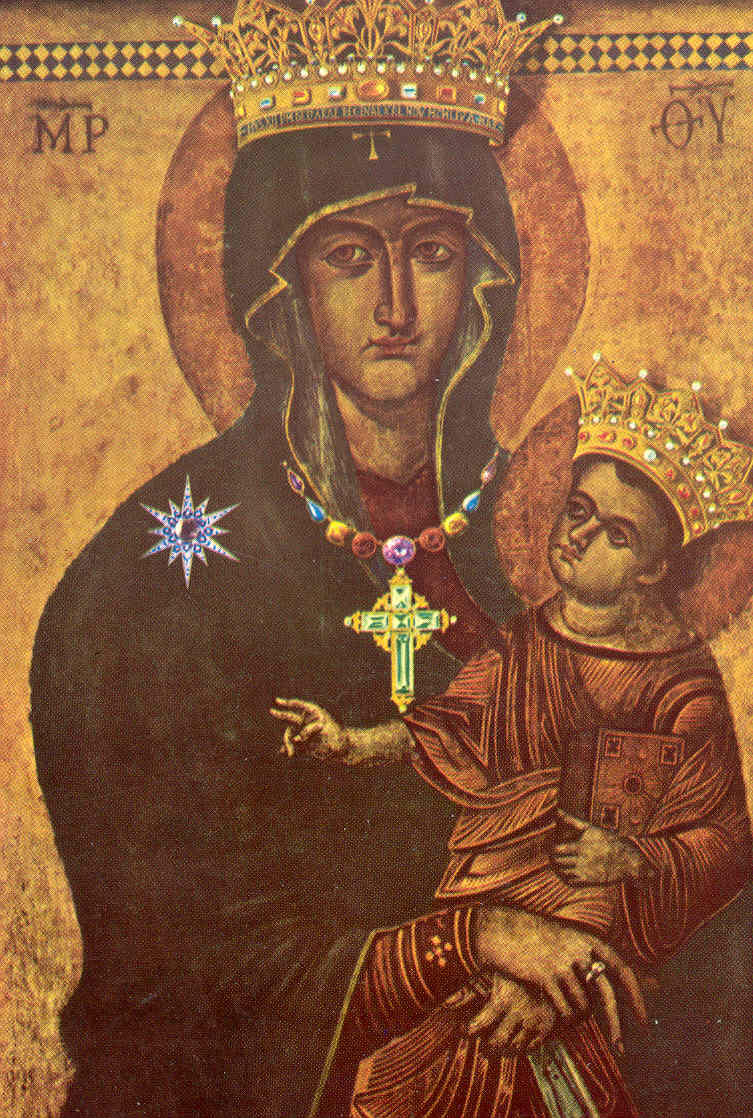
- Madonna and Child enthroned among the angels and saints, Mount Sinai, 6th century
Saint Catherine’s Monastery was constructed in the second half of the 6th century near Mount Sinai, and currently stands as the oldest continuously inhabited monastery in the world. Among its impressive collection of ancient manuscripts and artworks lies an image of Mary and the Christ Child surrounded by St. Theodore of Amasea, St. George, and two angels. In this depiction, Mary is sitting on a throne, a symbol of power, and the two angels look at a divine head that seem to reach out from the heavens right on top of her head. The icon was created through the encaustic technique—using vegetable pigments that get burned with hot wax and spread on wooden surfaces—typical of 6th-century icon-making.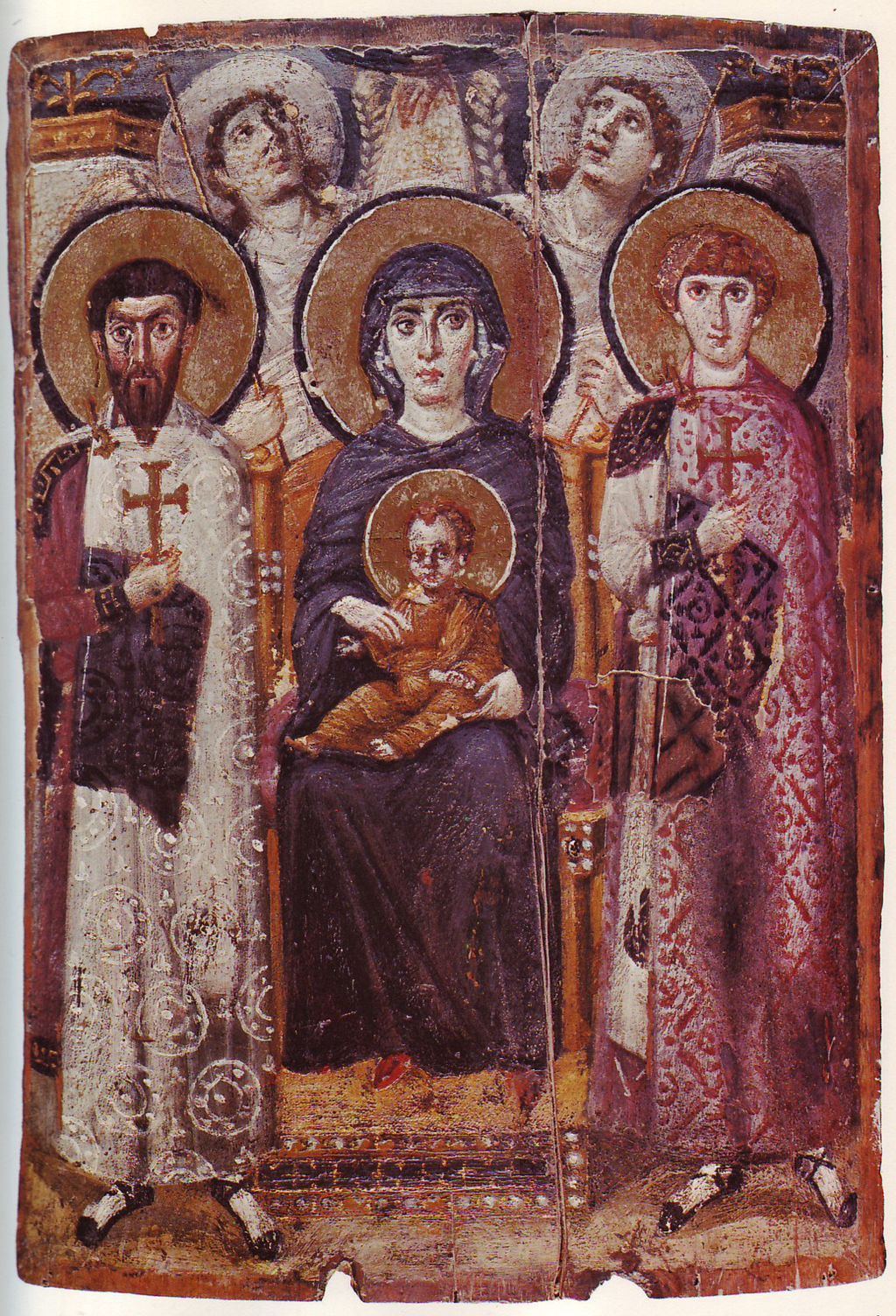
- Nativity, St. Catherine Monastery, Mount Sinai, 6th century
Also found in St. Catherine’s monastery, this encaustic Nativity icon depicts Mary attending to the Christ Child, who lies at the center of the composition attended by the the ox and the ass. The Magi arrive from the right, while angels and the star hover above. Below the central scene are vignettes depicting the angelic warning to Joseph (left) and birth attendants bathing the Christ Child.
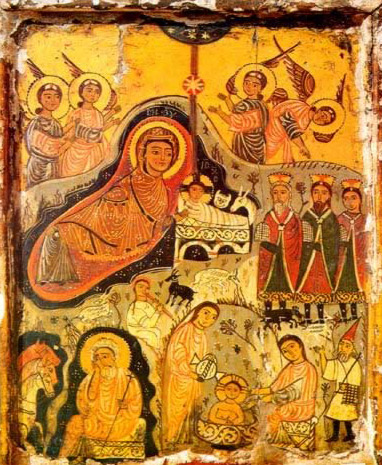
Nativity, St. Catherine Monastery, Mount Sinai, 6th century - Agiosoritissa (Mother of God), Constantinople, 7th century
The icon of “Panaghia Agiosoritissa,” also known as “Madonna the Advocate,” is one of the few icons that does not present Mary as mother. Here, the Virgin Mother is presented as an “intermediary” between humans and God, capable of praying for intercession. This icon, currently preserved in the Church of Santa Maria del Rosario, Monte Mario, Rome, was created in Constantinople during the 7th century.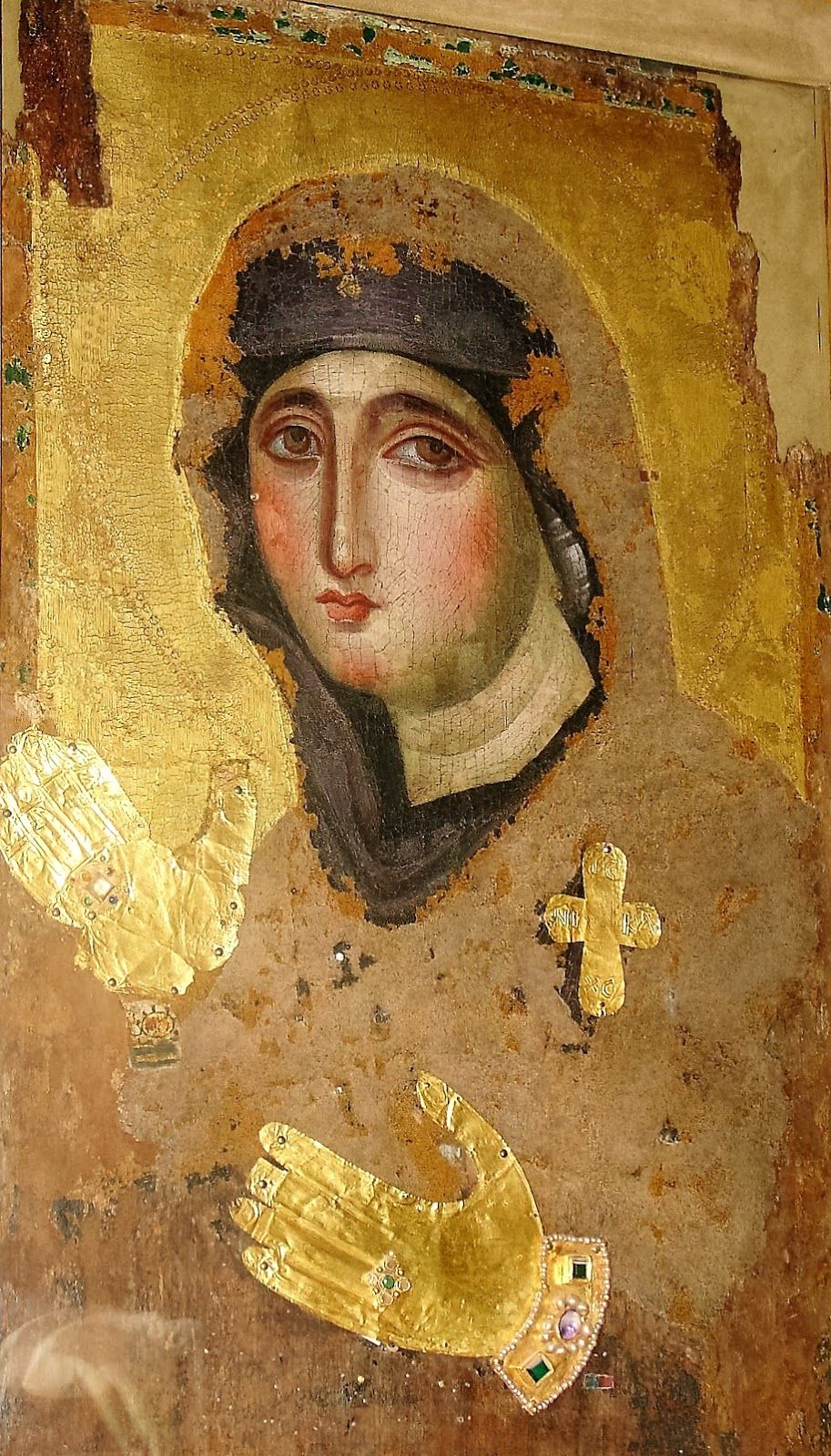
- Cover of copy of the Gospels, Germany, 8th/9th centuries
Before the invention of the printing press (1439), the holy scriptures were reproduced by hand using papyrus, wax, and parchment and covered with wooden or metal covers. This ivory cover of a copy of the Codex Aureus of Lorsch, an illuminated Gospel Book created in Lorsch Abbey, Germany, between 778 and 820, shows an enthroned Virgin Mary looking straight at the viewer as she holds the Christ Child on her lap. It is currently preserved at the Vatican Library in Rome.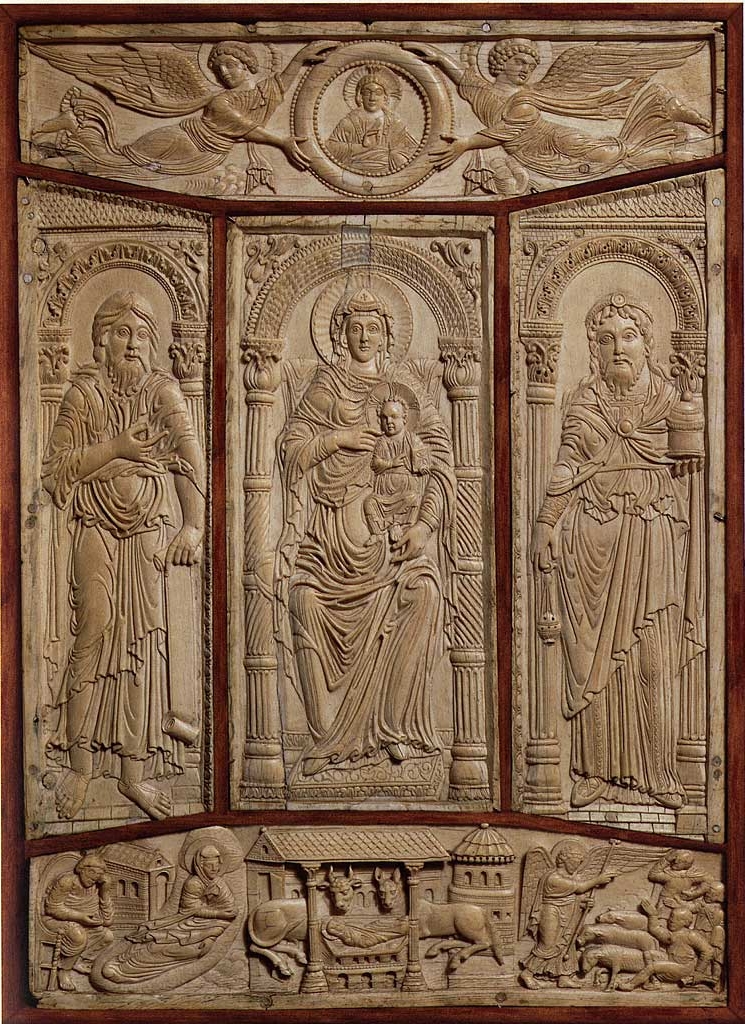
- Madonna and Child icon, 9th century
This icon, depicting Mary and the Child as they both look at the viewer, was created during the 9th century in Tsilkani, Georgia. For centuries it has been a revered image for believers in the East European country, attracting many pilgrims to its original location. Today it is part of the permanent collection of the Art Museum of Georgia in the capital, Tbilisi.
- Protectress of the Roman People, Rome, 5th century
